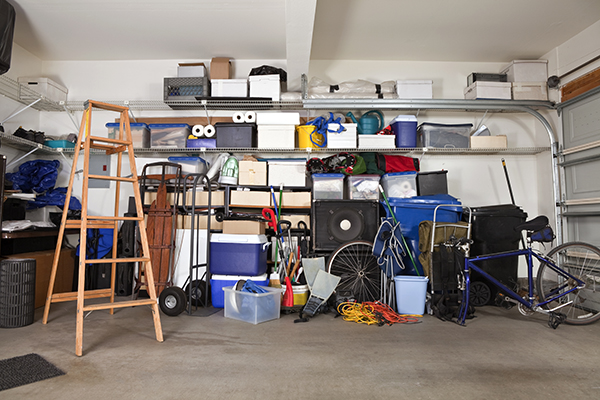
It’s easy for your home’s garage space to get messy over time. Garages are often easy to close off from the rest of the house, making an “out of sight, out of mind” philosophy tempting to adopt. Projects can get started and left unfinished, with the remnants left scattered about. Garages can also become catchall depositories for items that are hard to store in other areas of the home.
If you’re ready to whip your messy garage into shape, here are some tips to get you started:
- Clean first. Move everything out, including vehicles, and sweep the floor well. Consider painting the walls while the garage is empty – the fresh coat of paint will motivate you to keep the space clean and organized going forward.
- Using painter’s tape, mark off the space each of your vehicles occupies when parked, plus clearance for opening doors, trunks, and lift gates. This will help you calculate how much room you have on the perimeter of the garage for storing items.
- Look for ways to create vertical storage space. Add shelves for storing paint cans, small tools, and lawn chemicals, and hooks or brackets for hanging large items, such as ladders and bicycles.
- Cabinets can add useful and attractive storage space to a garage. Visit salvage stores or ask building supply stores for their samples. If you know of someone who’s doing a kitchen renovation, find out if you can reclaim some of the ones they are tearing out and plan to discard.
- Buy and store only what you can use in the current season. For example, you may not need to store fertilizer in the winter or de-icing solutions in the summer. Purchase smaller quantities of the things you need so you have less to store.
- Pay attention to safety measures when you’re organizing. When storing flammables, follow the storage directions on the labels and avoid storing flammables whenever possible. Store sharp items, like pruning sheers and axes, so that the blades are protected and out of the way. Keep chemicals, fluids, and other materials that could be harmful if swallowed or splashed out of the reach of children.
- Plastic bins with lids provide great garage storage. You can stack them and move them fairly easily when you need access. Color code the bins to make it easy to know what’s inside – assign different colors to bins storing garden supplies, tools, sports equipment, pet necessities, etc.
If space is limited or you find that you still have more things than you can comfortably fit in your garage, make a co-op arrangement with a neighbor. You can agree to each purchase and store different equipment to share so that you don’t have to both stock the same things. For example, you could purchase and store a leaf blower while your neighbor purchases and stores a fertilizer spreader. Or, maybe your neighbor stores electric hedge trimmers while you keep the weed eater. Either way, you both have access to the tools you need while spending half the money and using half the storage space.